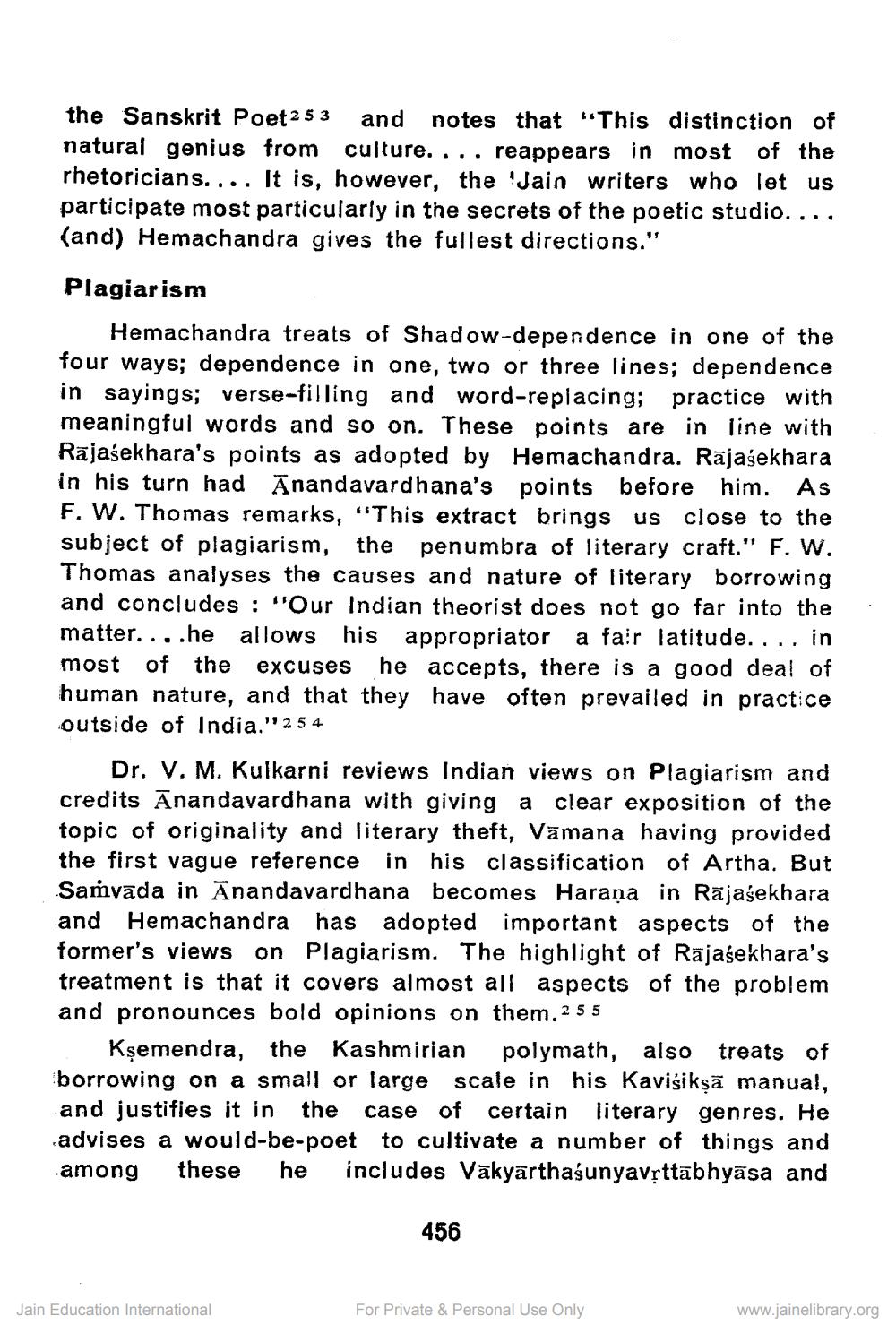________________
the Sanskrit Poet2 53 and notes that “This distinction of natural genius from culture. ... reappears in most of the rhetoricians. ... It is, however, the 'Jain writers who let us participate most particularly in the secrets of the poetic studio. ... (and) Hemachandra gives the fullest directions."
Plagiarism
Hemachandra treats of Shadow-dependence in one of the four ways; dependence in one, two or three lines; dependence in sayings; verse-filling and word-replacing; practice with meaningful words and so on. These points are in line with Rājasekhara's points as adopted by Hemachandra. Rājasekhara in his turn had Ānandavardhana's points before him. As F. W. Thomas remarks, "This extract brings us close to the subject of plagiarism, the penumbra of literary craft." F. W. Thomas analyses the causes and nature of literary borrowing and concludes : "Our Indian theorist does not go far into the matter....he allows his appropriator a fair latitude. ...in most of the excuses he accepts, there is a good deal of human nature, and that they have often prevailed in practice outside of India." 2 5 4
Dr. V. M. Kulkarni reviews Indian views on Plagiarism and credits Ānandavardhana with giving a clear exposition of the topic of originality and literary theft, Vāmana having provided the first vague reference in his classification of Artha. But Samvada in Anandavardhana becomes Harana in Rājasekhara and Hemachandra has adopted important aspects of the former's views on Plagiarism. The highlight of Rajasekhara's treatment is that it covers almost all aspects of the problem and pronounces bold opinions on them.2 5 5
Kşemendra, the Kashmirian polymath, also treats of borrowing on a small or large scale in his Kaviśikṣā manual, and justifies it in the case of certain literary genres. He advises a would-be-poet to cultivate a number of things and among these he includes Vākyarthasunyavșttābhyāsa and
456
Jain Education International
For Private & Personal Use Only
www.jainelibrary.org




